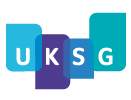The organization known today as the International Coalition of Library Consortia (ICOLC) arose in the mid-1990s out of a need for newly formed consortia to exchange ideas and address issues of common concern. These consortia were usually created either to provide a shared central library catalog for their member libraries or to leverage their group strength to negotiate custom deals for electronic journals. The key issues for consortia in these early years concerned the licensing of electronic journals and working with publishers to make the transition to online content smoother for libraries. Consortia staff drafted, discussed, shared and negotiated license clauses to achieve desired results. Publishers and vendors were invited to have conversations with the group, and early discussions were spirited and productive. Across the next two decades the organization grew to include over 200 library consortia worldwide, many with expanded programs that now include additional types of services for their member institutions.
Origins and development of inter-consortial collaboration
In 1995 library consortium leaders in the US established an e-mail discussion list to support dialog within the consortial community. The first in-person gathering for the group occurred in 1997 in St Louis, Missouri, where attendees were mostly from the US, though several came from Canada and the UK. As worldwide interest in the community conversation increased, a gathering of consortium leaders was held in Europe in 1999. From these early meetings came the group name of Consortium of Consortia, which was soon changed to the International Coalition of Library Consortia as global interest grew.
ICOLC has a legacy of being entirely informal, with no bylaws, no membership dues and no elections. This informality was driven by a desire to address the issues of the day and spend as little time as possible on operational details and organizational structure. Volunteers stepped forward to lead the group, organize programs, arrange meetings and spearhead discussions on the e-mail list.
Over time ICOLC meetings settled into a pattern of two per year. North America now hosts a spring meeting and Europe hosts a fall meeting. Each meeting attracts around 100 representatives from library consortia and lasts several days, with packed agendas full of intense community conversation. Vendors and publishers have been invited only to particular meeting sessions to discuss specific issues of concern to the consortial community. ICOLC does not request support from vendors or publishers, and there are no exhibit areas at the meetings. To date, ICOLC has held 26 North American meetings and 16 European meetings. Additional, shorter gatherings now occur at the American Library Association (ALA) meetings twice per year and at other venues as determined by the community.
From time to time events occurred that prompted ICOLC members to develop public statements on a variety of issues and topics. Pricing practices of electronic information providers often led to such statements, along with other issues of importance to library consortia, their governing boards and their members. One of the earliest and most prominent public statements from ICOLC addressed guidelines for usage data for online content. The ICOLC community identified the problem and addressed the growing need for reliable, comparable usage data with the Guidelines for Statistical Measures of Usage of Web-Based, Indexed, Abstracted and Full-Text Resources published in 1998, four years prior to the launch of Project COUNTER. ICOLC subsequently endorsed Project COUNTER and NISO’s Standardized Usage Statistics Harvesting Initiative (SUSHI) protocol and reliance on XML as the standard delivery format for usage statistics. The Statement on the Global Economic Crisis in 2009 and the Statement on the Google Book Settlement in 2010 are other notable examples of the ICOLC community being spurred to action.
The text of an interview by Kathy Perry, recently retired Executive Director of the Virtual Library of Virginia, questioning Tom Sanville, recently retired Senior Director of Licensing and Strategic Partnerships at LYRASIS, appeared in a recent issue of Collaborative Librarianship. Kathy and Tom, two of the original consortium leaders who helped to form ICOLC and guide its activities over the years, shared their memories of the history of this dynamic, flexible and influential organization that has made such valuable contributions to libraries and consortia. The interview sheds light on the goodwill and collaborative spirit that ICOLC has fostered among members of the consortial community over the past two decades.
Present time
The current ICOLC website is both a public and an ICOLC community resource. Member consortia are encouraged to create and maintain a profile of their group that is publicly available at the site. ICOLC statements and news releases also are posted publicly at this location. Consortia staff have additional access to ICOLC meeting content and internal topical discussion pages at the site. The ICOLC discussion list remains active as leaders bring issues to the attention of their consortial colleagues and seek collective input. Program planning is under way for future events.
Approximately 170 consortia, located throughout the world, are profiled on the ICOLC website. Over 200 consortia are represented by nearly 700 individuals on the ICOLC e-mail discussion list. Outside the US, many consortia represent entire countries and are affiliated with their governments, whilst library consortia within the US often are organized at the state or regional level, or by a specialized type of library. The majority of ICOLC consortia are heavily focused on academic libraries, although multi-type library consortia also have a significant presence. Figure 1 shows the distribution of ICOLC member consortia by region.
Regional distribution of ICOLC member consortia
As one long-time ICOLC participant observed several years ago at a gathering, library consortia are like snowflakes. Each one is unique. Operational models vary, programs and services vary, and the size of the consortia ranges from three members to over 1,000. Online content licensing for groups and shared library catalogs are still the leading activities across the landscape. However, as these programs mature, consortia and their members are highly motivated to seek out new ways to work together to advance their communities.
Due to quite a number of recent and recently announced retirements, ICOLC has bid farewell to many of the original consortial leaders who volunteered their time and led the organization faithfully for so many years. Their work created a highly influential and effective organization that advanced library consortia worldwide. A volunteer committee consisting of experienced consortia veterans and second-generation consortial leaders is now reviewing ICOLC’s organizational structure, mission and goals, to help chart a course for the future so that ICOLC continues to serve the global consortial community well.
Moving forward
The results of an ICOLC community survey in early 2015 indicate that the new preferred leadership structure is a steering committee with limited appointment terms and representatives from various parts of the world. The desire is strong to keep ICOLC relatively informal, and the group most likely will still be led and supported by volunteers. Members of the steering committee will provide guidance and oversight for all of the activities conducted under the auspices of ICOLC. Local hosts for the annual meetings held in North America and Europe will also lead the program planning group for the events. The results of the survey were discussed thoroughly at the ICOLC meeting in Albany, NY, in March 2015, and will be discussed again at the ICOLC meeting in Oslo, Norway, in October 2015. After all input is gathered, a decision will be made about the exact manner in which to proceed with a new leadership structure.
ICOLC was built by collaborative consortia staff that were themselves facilitating collaboration among their member libraries. In the 18 years since the first formal gathering of library consortia staff, the type, level and amount of collaboration that is needed to support local library operations has evolved along with higher education and technology. Two decades ago consortium leaders worked to establish shared library management systems and negotiated price discounts for online content purchased by their library members. Now there are many additional needs and opportunities for collaboration within a consortium and, significantly, these needs are leading some consortia to seek out ways to scale up and engage with each other for the greater good of all of their member libraries. Consortia are now conceptualizing shared staff programs among their member libraries, expanding inter-consortial licensing programs, building shared print storage facilities, acquiring shared high-end digitization equipment, hosting locally created content, developing administrative tools to support their work (e.g. Occam’s Reader from the Greater Western Library Alliance, Gold Rush from the Colorado Alliance of Research Libraries and the Journal Usage Statistics Portal from Jisc), and discussing unified strategies to address open access issues and initiatives. The ICOLC community is in a strong position to facilitate this higher level of collaboration.
One new ICOLC initiative under way is bringing multiple consortia together in a united effort to address a shared concern around the collection of consortial usage statistics. ICOLC has long been interested in usage data, as shown through its work to establish shared expectations and standards mentioned earlier in 1998. While standards such as SUSHI and Project COUNTER have advanced the gathering and analysis of usage data for online content at the local library level, consortia have a much more challenging time gathering usage data for each member in a way that allows them to analyze the group’s data in an easy and useful manner. Various consortia around the world have developed strategies that assist their own data collection and analysis efforts. However, many consortia still face laborious efforts to gather data for each library in their community and analyze it in useful ways. A cooperative inter-consortial project to develop common methods and technology could benefit many more groups and keep costs at a reasonable level for all.
One of the more pressing topics that has come to light as the ICOLC community moves forward involves the relationships that exist between ICOLC and other groups. ICOLC needs to have more visibility among other non-profits and governmental agencies that sponsor programs and initiatives to address important issues of concern to the academic library community. Shared conversation with some of these groups may identify areas of common interest and highlight the benefit of joint efforts. Just as more members of the ICOLC community are seeking to work together on an inter-consortial basis, ICOLC itself will need to address the challenges of the time by seeking opportunities to work with other groups on a higher scale.
In the fall of 2015, an ICOLC gathering at the Charleston Conference in Charleston, SC, will provide an opportunity for consortia staff to discuss issues related to the procurement and usage of e-books with publisher members of the American Association of University Presses (AAUP). A major theme will be the withholding of titles from availability at various sites and platforms, how libraries react in terms of their buying decisions, and the information that consortia are able to glean from their communities that is of potential interest to publishers. The AAUP is an example of the type of organization with which ICOLC may seek to align interests in the future. Closer ties with such groups will help ICOLC provide an even greater degree of support to libraries in the changing ecosystem of scholarly communication.
Conclusion
The ICOLC community was created two decades ago by a generation of stalwart consortia staff who knew they had much to learn from each other and needed to collaborate in order to leverage their collective strength and find the best path forward. The manner in which they addressed the challenges of their time, many of which still exist today, helped to shape current management systems and business models for online content and library services. The current generation of consortium leaders owes a great deal to these pioneers for building a strong foundation of consortial collaboration. Opportunities abound now for ICOLC and its members to pursue a wider array of collaborative programs scaled at even higher levels, always in support of the libraries they serve.
Competing interests
The author has declared no competing interests.



